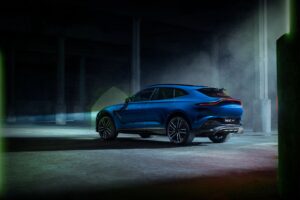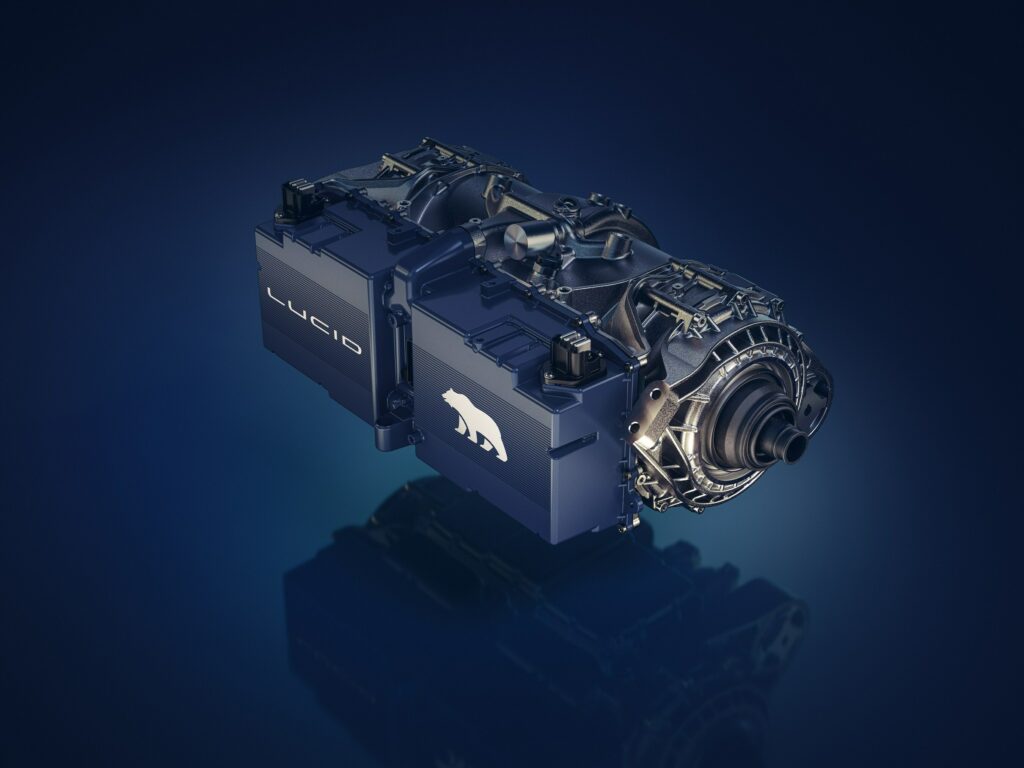
Aston Martin taps Lucid to help accelerate EV strategy
By onMarket Trends
Aston Martin says it’s partnering with Lucid to create the world’s “most thrilling and highly desirable electric performance cars” as the industry’s battle to gain electric vehicle (EV) market share rages on.
In announcing the agreement Monday, the automakers said Lucid would give Aston Martin access to its powertrain technology, technical support and supplies. They said the goal is to help strengthen the British automaker’s EV strategy and long-term growth.
“This partnership will represent a landmark collaboration between Aston Martin, a storied marque with a rich history, including winning at Le Mans and its current successes in F1, and the very best of Silicon Valley innovation and technology from Lucid,” said Peter Rawlinson, Lucid’s CEO.
“In line with its strategy, Aston Martin selected Lucid, recognizing the profound benefits of adopting its world-leading electric drivetrain technology, exemplified by the breakthrough 516-mile EPA-estimated range achieved by the Lucid Air Grand Touring.”
The partnership will see Aston Martin gain access to more than $450 million worth of powertrain and battery systems. This includes Lucid’s “ultra-high performance” twin motor drive unit, battery technology and its onboard charging unit called Wunderbox.
“The twin motor rear drive unit’s prodigious power combines with torque vectoring to extend the capabilities of the car beyond that achievable with a passive all-wheel-drive system,” Lucid said in a press release.
“These technically innovative electric motors incorporate Lucid’s microjet stator cooling and wave winding, new heat exchanger technology and heightened coolant flow rate, as well as an accompanying battery system that is likewise upgraded for higher power and more precise thermal logic.”

Throughout the next five years, Aston Martin plans to spend more than $2.5 billion on advanced technologies.
“The supply agreement with Lucid is a game changer for the future EV-led growth of Aston Martin. Based on our strategy and requirements, we selected Lucid, gaining access to the industry’s highest performance and most innovative technologies for our future BEV products,” said Lawrence Stroll, Aston Martin’s executive chairman.
“We will not only leverage the significant investments Lucid has made to develop its world-class technologies but will also further enhance and differentiate the drive experience through the work [Aston Martin Chief Technical Officer] Roberto Fedeli and his teams are already developing, aligned with our ultra-luxury, high-performance strategy.”
Aston Martin is planning to launch its first EV model in 2025. It has said that by 2030, all of its models will have an EV version.
It also revealed Monday that Mercedes-Benz AG will continue providing Aston Martin with access to some of its technologies, related to both internal combustion engine (ICE) and electric vehicles.
Aston Martin is among a number of luxury automakers transitioning to EVs to meet growing demand. Its partnership with Lucid came as other automakers collaborate to advance their electrification strategies.
Within the past month, Ford, General Motors, and Rivian have announced they had signed Tesla Supercharger network agreements. On Tuesday, Volvo announced that it would also join the network.
Under Volvo’s agreement, beginning in 2025 its regional EV models will be equipped with the North American Charging Standard (NACS) charging ports.
“As part of our journey to becoming fully electric by 2030, we want to make life with an electric car as easy as possible,” said Jim Rowan, Volvo CEO. “One major inhibitor to more people making the shift to electric driving – a key step in making transportation more sustainable – is access to easy and convenient charging infrastructure.”
Also Tuesday, Stellantis launched its new Free2move Charge system that it says will offer charging and energy management to meet customers’ EV needs in three pillars geared toward homes, businesses, and public charging networks.
Market reluctance
As automakers become more aggressive with their EV plans, some reports have indicated that not all consumers are keen to make the shift.
In a newly-released report, Cox Automotive forecasted that 1 million new EVs will be sold this year, doubling the number sold in 2021.
It noted that while 51% of consumers are considering buying a new or used EV, up from 38% in 2021, “the gap between consideration and sales remains wide.” EV sales will account for less than 8% of new vehicle sales this year, it said.
However, the Specialty Equipment Market Association (SEMA) recently said that while EV use is rising, there’s still room in the market for ICE vehicles in the years to come.
“In fact, some futurists believe that by 2035 the total carbon footprint of an ICE vehicle may nearly match that of an EV — especially when you factor in the rare-earth mining, spent battery disposal, and other not-so-eco-friendly activities associated with electrification,” SEMA wrote on its website.
“The automotive aftermarket, for as long as it’s been around, has driven innovation — specifically towards efficiency around the internal combustion engine,” said Ian Lehn, Boostane owner and former chair of the SEMA Emerging Trends and Technology Network (ETTN). “I look at vehicle technology as a spectrum, and no one technology is going to be the silver bullet for our transportation demands.”
Images
Featured image: Aston Martin DBX707 (Courtesy of Aston Martin)
Secondary image: Lucid’s twin motor drive unit (Courtesy of Lucid)
